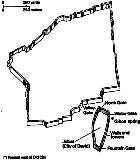Jerusalem at the time of Jesus
Questions for Bible study groups
- Why did King Herod want to rebuild and embellish ancient Jerusalem?
- What did Herod do to embellish the sacred Temple Mount in Jerusalem?
- How did he pay for all this?
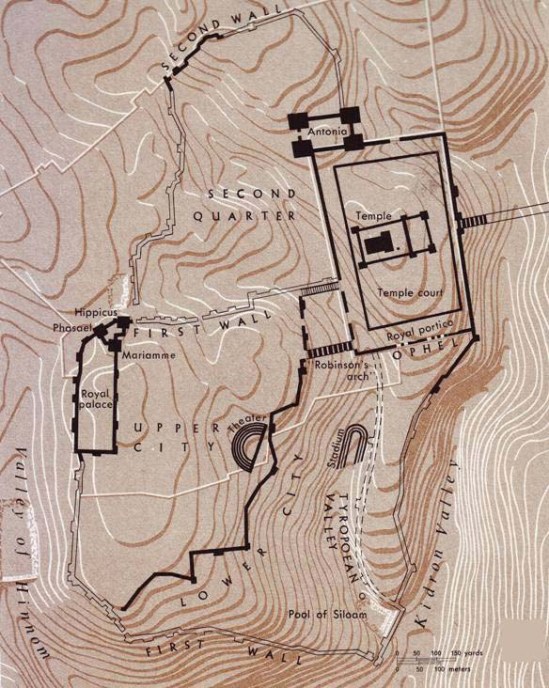
Herod was one of the ancient world’s great builders, and he transformed Jerusalem into a world-class city. He had various reasons for doing so:
- he loved pomp and ostentation, and wanted a suitable background for the magnificent king he was determined to be
- he wanted to immortalize his name so that it rang through the centuries – he did this, but in ways he could never have forseen
- he needed to secure his rule, since he was only half-Jewish and none too popular with his subjects
- and he had to appease the hostile population and provide it with work.
These were Herod’s main motives for fortifying and ernbellishing Jerusalem. The revenues he derived from trade and taxes allowed him to build a magnificent palace in the northwestern corner of the Upper City (see reconstruction below). It was guarded on the north by three structures that he named
- Phasael, after his brother
- Mariamme in honor of the beautiful Jewish princess, his wife, whom he later murdered
- and Hippicus, after his closest friend and supporter. See reconstruction of these towers below.
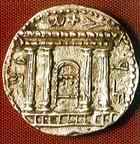 He also built a theater in the part of the city inhabited by wealthy Hellenizers, raised an inner wall to protect the Upper City, and strengthened the North Gate in the Second Wall. South of the Temple Mount he built a stadium, probably in the Tyropoean valley.
He also built a theater in the part of the city inhabited by wealthy Hellenizers, raised an inner wall to protect the Upper City, and strengthened the North Gate in the Second Wall. South of the Temple Mount he built a stadium, probably in the Tyropoean valley.
Herod was even more active on the Temple Mount: doubling the area of the Temple esplanade and girdling it with walls and porticoes. lts most prominent feature was the ‘royal portico’ (basilica) in the south of the square, which Herod connected with the Upper City by a second bridge, known after its discoverer as ‘Robinson’s arch’ (see reconstruction below). At right is a coin dating from this period; it is the only known contemporary image of the Temple as reconstructed by Herod the Great.
The king also rebuilt the Temple proper and to secure control over theTemple rebuilt the old Baris, at the northwestern corner of the Temple Mount, into a huge fortress, which he called ‘Antonia’ in honor of his Roman patron and friend, Mark Antony.
Herod was also active as a builder outside his capital: he founded the harbor city of Caesarea in place of Strato’s Tower and rebuilt Samaria, calling the new city ‘Sebaste’ in honor of the Roman emperor Augustus. He built fortresses at Herodium and near Jericho, and entirely reconstructed Macherus (where John the Baptist was beheaded) and Masada on the two opposing shores of the Dead Sea.
Gospel texts: Josephus, Antiquities of the Jews 15:318, 380-425
Josephus, Wars of the Jews 1:401, 5:108, 161, 238, 246, 507, 7:172-177
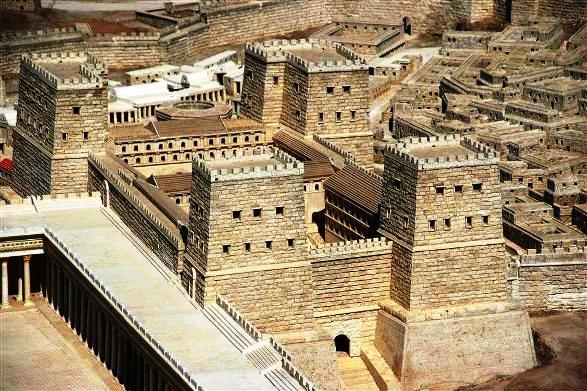
The fortress towers built adjacent to the royal palace. See middle left of map at the top of this page.
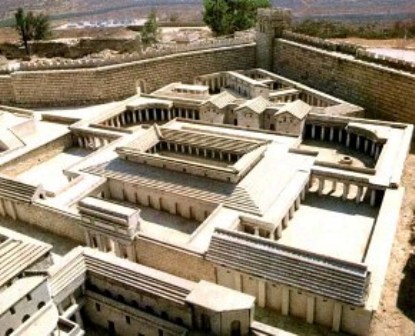
Reconstruction of the palace headquarters of the High Priests, including Caiphas
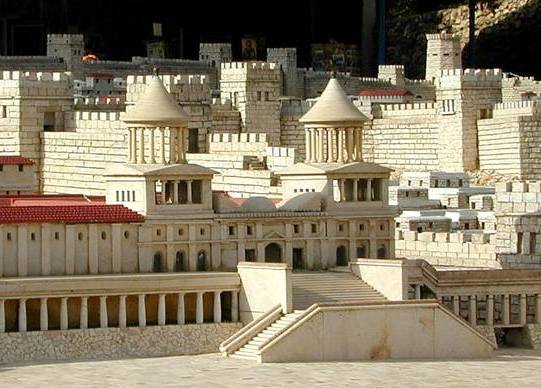
Reconstruction of the palace of the Hasmonean royal family in Jerusalem
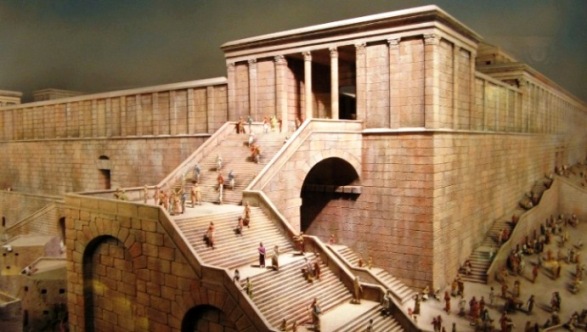
Reconstruction of one of the entrances to the Temple precincts

